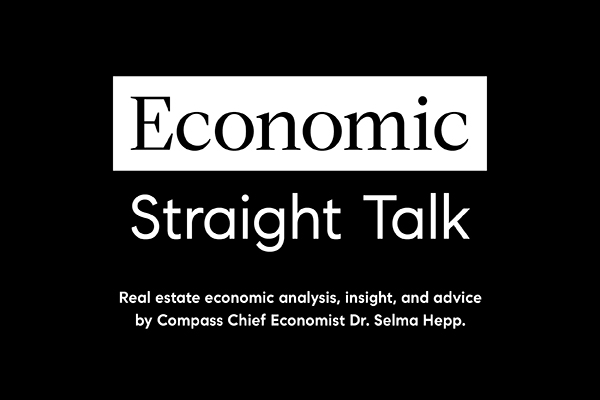
- Friday’s national employment report from the U.S. Bureau of Labor Statistics confirmed a number of recent economic reports which showed that the U.S. economic growth is gradually downshifting to a slower gear, but not collapsing.
- The employment report showed that the U.S. economy added 130,000 jobs in August including the 25,000 additions due to Census hiring. While August’s jobs report suggests slowdown in hiring, there were some positives in the report including stronger wage growth, rising labor force participation and increase in hours worked. Also note that August data has historically shown wide upward revisions, thus the slowdown may not be as abrupt as August numbers suggest.
- While overall hiring growth is slowing as expected, employment growth for young adults improved from July exceeding job growth among older age cohorts. This is relevant given that young adults are more consequential to household formation and thus new housing demand. Also, entry-level wage growth accelerated to its strongest rate since December.
- The unemployment rate continued to bump around the post-recession low and fell to 3.7 percent in August. While a tight labor market provides potential for an even lower unemployment rate, a lot is riding on how businesses will deal with anticipation over a slowing economy and if they will continue to expand their workforce. However, increase in hours worked and higher participation rate is alleviating fears that employers are cutting back hours amid softening demand. Also, the employment-to-population ratio for workers ages 25 to 54 hit the highest rate since 2008, suggesting all the open positions are pulling more Americans off the sidelines. Total job openings continue to remain high at 7.3 million available jobs.
- Financial markets have their hearts set on a 25 basis point cut by the Federal Reserve at their September meeting in two weeks, especially following the weaker than expected jobs report. However, wage growth over the last three months has picked up at the fastest pace since 2007, which throws a kink into the Fed’s decision to cut rate as it suggests inflation pressures are heating up — a time at which the Fed should be increasing the rate.
- Markets have overall rallied this week following the news that the U.S. and China would resume talks next months. Nevertheless, markets may have overreacted to the news as much progress is unlikely any time soon. At this stage, both sides have an incentive to wait until after next year’s presidential election in November. China is hoping Trump will lose and Trump is hoping that the ongoing conflict will help with his base.
- Nevertheless, continued uncertainty and further escalation in the trade war will start to weigh on U.S. business sentiment and could exacerbate slowing of new hiring. ISM manufacturing index, also released this week, showed that trade concerns have started to weigh on manufacturing which fell into contractionary territory with declines in new orders, particularly export orders. ISM non-manufacturing index, however, showed that the broader economy is still holding up. Consumers fortunately remain pretty unphased by the uncertainty and volatility and continue to prop the global economy through retail spending.
- Taken together, while many are on edge expecting an imminent recession, we would have to see a more significant shift in the labor markets and significant cooling of consumer spending to justify imminence. More likely, we will continue to see a gradual slowing of economic conditions putting the probability of recession beginning in 12 months at 20 percent.

